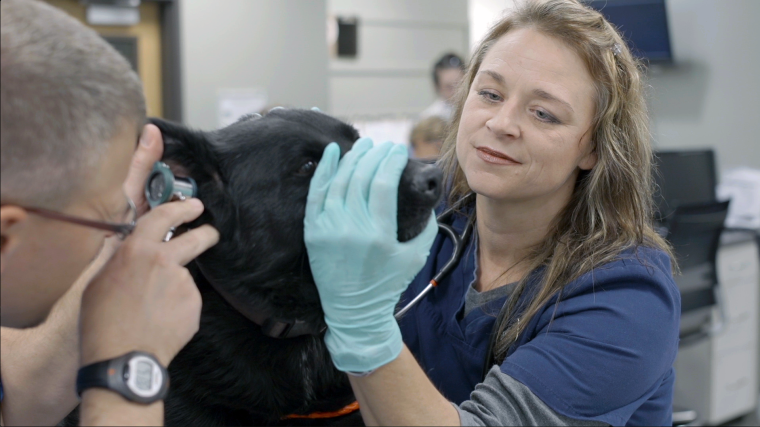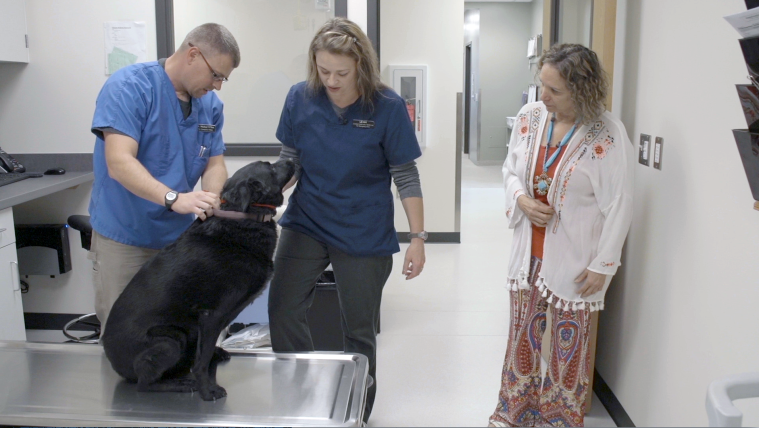
Written by Rena Shawver, L&I Return to Work Partnerships
Leah’s Story
When a horse reared up behind her, all Leah could do was hope for the best as the 1,200-pound animal came down on top of her. The vet tech knew instantly her back was broken. After multiple surgeries to repair several breaks and a long recovery period, Leah had recovered physically as much as possible. Among other things, her “new normal” meant no heavy lifting. She realized her permanent physical restrictions would not allow her to work with large animals again. But being a veterinarian technician was the only work she knew; and she loved her job.
Today, Leah is working full-time as a vet tech with a new employer at a small animal emergency clinic. Although she was hired for her skill, as a certified preferred worker through the Washington State Department of Labor & Industries (L&I), her employment comes with financial incentives that will benefit both her and her employer.

Supporting workers after recovery
Like Leah, some workers are not able to go back to their old jobs because of permanent medical restrictions caused by a workplace injury or illness. They’ve healed but are limited from doing certain tasks.
L&I certifies these workers through the Preferred Worker Program and provides financial incentives and premium relief to eligible employers who create medically-appropriate, long-term jobs for preferred workers.
Major changes to the Preferred Worker Program
Last January, the Washington State Legislature expanded the Preferred Worker Program to allow all employers in Washington State, including the employer of injury and self-insured employers, the opportunity to hire a preferred worker.
Under the rules of the expanded program, employers will receive the following:
- Financial protection against subsequent claims,
- Premium relief,
- Bonus payment equal to 10% of the worker’s wages or $10,000, whichever is less, for continuous employment, and
- Reimbursement for:
- 50% of the base wages paid to the preferred worker, up to $10,000.
- Some of the cost of tools, clothing, and equipment the worker needs to do the job.

Why offer incentives to support jobs?
Many employers at heart want to help their workers after an injury, but find making that transition from the job of injury to a new job that meets the worker’s physical or mental restrictions a hardship financially.
Preferred Worker Program incentives help the worker and employer keep their relationship, giving them extra support and guidance through a transition period often with the help of a vocational counselor.
Other return-to-work incentives
Stay at Work is another return-to-work incentive program. L&I reimburses eligible employers for some of their costs when they provide temporary, light-duty jobs for injured workers while they heal. Employers covered through the workers’ compensation State Fund may qualify for financial incentives from both the Stay at Work Program and the Preferred Worker Program.
Hiring employers could also qualify for additional financial help to modify equipment at worksites that will help preferred workers complete certain work-related tasks.
Using return-to-work programs help lower an employers’ workers’ compensation costs both in the short and long-term.
Learn more about the Preferred Worker Program
Already, about 100 employers have contacted L&I with interest in hiring some of the 1,500 certified preferred workers who are ready to work and are supported by the financial incentives of the Preferred Worker Program.
To learn more, sign up for one of L&I’s Preferred Worker workshops by going to www.Lni.wa.gov/PreferredWorker. Or contact the Preferred Worker Program by phone at 1-800-845-2634 or by email at PrefWorkerProg@Lni.wa.gov to ask how to apply for preferred worker benefits.
Hear more about Leah’s story by watching this video.



You must be logged in to post a comment.